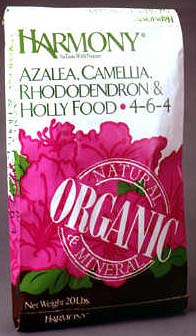RENEGADE GARDENER™
The lone voice of horticultural reason
“Water-soluble fertilizers work just as well as granular, and are in many ways easier and more beneficial.”
 Nah-nah-nana-nah-nah, hope you’re having real fun. If your garden is anywhere near Minnesota, and you’ve pledged your allegiance to only using water-soluble fertilizers (Peter’s, Miracle-Gro, etc.) you could have used the stuff every two weeks starting in late April and still not fertilized a (non) bloomin’ thing. Been a little rainy.
Nah-nah-nana-nah-nah, hope you’re having real fun. If your garden is anywhere near Minnesota, and you’ve pledged your allegiance to only using water-soluble fertilizers (Peter’s, Miracle-Gro, etc.) you could have used the stuff every two weeks starting in late April and still not fertilized a (non) bloomin’ thing. Been a little rainy.
I don’t want to come off as a complete granular snob — I use Peter’s to fertilize my containers, and splash it on big beds of annuals, why not? But this heretofore extremely wet season is a good example of why it’s hard to beat granular fertilizers scratched in around perennials, vegetables, trees and shrubs.
Water-soluble fertilizers only work so long as the water remains around the root zone. Well, plants don’t snort it up the second it arrives, they like to graze. Meaning that when it rains every day like it has been, the water-soluble fertilizer gets washed through the root zone, particularly of shallow-rooted annuals and perennials.
Luckily I gave my trees and shrubs the proper amount of granular fertilizer around the start of May, meaning they have been gently and purposefully fertilized during this continuing monsoon season. I could go out there right now and dump gallons of Miracid around the evergreens, and it would be history by the time the skies dump buckets of rain again tonight.
Granular fertilizers are a type of soil additive. Scratching them in with a hand claw loosens the soil, and breaks topsoil tension. The granular sits in the soil and releases a little bit of N-P-K every time the plant is watered, or after a rain. One treatment typically lasts about a month, though there are season-long, time-release granulars also available to try.
Water-soluble “plant food” is an adrenaline rush of nutrients, and like so many drugs, the effects wear off far too soon. Plants become junkies, waiting for their next hit. And if fertilizing means you have to water, as is the case with water-soluble fertilizers, what exactly do you do when your soil is too wet in the first place?
What about the benefits of “foliar feeding” touted by the water-soluble manufacturers (well, one, anyway)? There is some credence to their claims when it comes to annuals. Aside from that, the differences are negligible. Plants draw a huge majority of the nutrients they need through their roots, not their needles and leaves.
And are water-soluble fertilizers easier, more convenient that granular? I’ve already stated that I use them on my containers, and for big beds of annuals. Well, I’m picking the fertilizer type that best fits the situation. Annuals in containers need constant moisture, and aggressive feeding. There isn’t much soil surface after I’m done potting up a container. Big beds of annuals are dicey to get into, after I’ve planted the annuals. All these reasons make water-soluble fertilizers the best choice.
But when it come to trees, shrubs, my perennials (those that I fertilize), and your vegetables, I’m sold on granular fertilizers, and use both organic and synthetic.
Don Engebretson
The Renegade Gardener